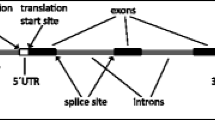
Overview
- Written by leaders in genetic and developmental research on scoliosis and developmental studies of the spine
- Recent developments in clinical and molecular genetic studies of these disorders are also discussed
- Includes supplementary material: sn.pub/extras
Buy print copy
About this book
Similar content being viewed by others
Keywords
Table of contents (10 chapters)
-
Front Matter
-
Back Matter
Editors and Affiliations
About the editors
Kenro Kusumi, Ph.D., is an Associate Professor in the School of Life Sciences at Arizona State University and is a founding faculty member at the new University of Arizona College of Medicine-Phoenix in partnership with Arizona State University. Dr. Kusumi’s current research focuses on early spinal development, axial musculoskeletal regeneration, and their applications to genetic studies of scoliosis and other musculoskeletal disorders.
Sally L. Dunwoodie, Ph.D., is an Associate Professor at the University of New South Wales and Laboratory Head in the Developmental Biology Division at the Victor Chang Cardiac Research Institute in Sydney. Dr Dunwoodie's research focuses on development of the spine, heart, kidney and placenta in mouse, and their relevance to the molecular basis of congenital abnormalities.
Bibliographic Information
Book Title: The Genetics and Development of Scoliosis
Editors: Kenro Kusumi, Sally L. Dunwoodie
DOI: https://doi.org/10.1007/978-1-4419-1406-4
Publisher: Springer New York, NY
eBook Packages: Biomedical and Life Sciences, Biomedical and Life Sciences (R0)
Copyright Information: Springer-Verlag New York 2010
Softcover ISBN: 978-1-4899-8296-4Published: 07 September 2014
eBook ISBN: 978-1-4419-1406-4Published: 15 December 2009
Edition Number: 1
Number of Pages: XII, 218
Topics: Human Genetics, Developmental Biology, Human Physiology, Orthopedics



